I am bringing you blog posts about Zambia. It is a series in progress on my recent trip to Zambia with GreenPop. I have to say I am so excited about it and I have dozens of posts up my sleeve… I am trying to limit myself to the ones that will most interest our readers. Firstly, I wrote the se7en stories behind a trip to Zambia, followed by just how to get there. And today I am bringing you something that I think is pretty much a top priority for readers all over the world. Food… and the feasting in Zambia.
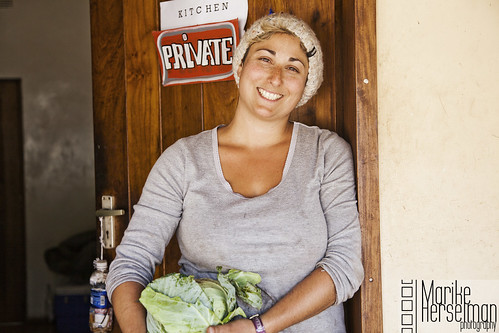
Meet Amanda the talent behind providing fabulous meal after fabulous meal in a eco-friendly kitchen, amidst a sea of environmentalists. The challenges are enormous, the task unending and she did it with joy. I asked her a couple of questions about the eco-conscious kitchen and just how hard it was to achieve with at least a hundred folk present and hungry for meals three times a day, everyday, for a couple of weeks. I tell you it makes my making 30 meals a day, everyday, look just a little lame. She did have a brilliant team, of ever friendly faces helping her… but still the task was enormous and she was great. You can catch up with her at her Boutique Deli, Saucisse, at the Biscuit Mill in Woodstock.
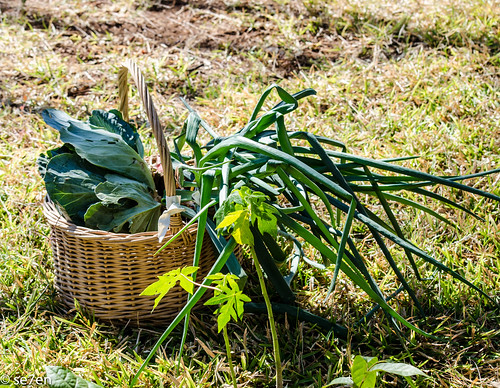
Se7en Questions and Answers About Feasting in an Eco-Friendly Kitchen, And A Bonus Recipe
- Tell Us About Sourcing Local Ingredients:
- How Did You Minimise the Use of Power in Your Kitchen?
- In a Zero Waste Campsite, How Did The Kitchen Cope?
- Just How Did You Feed A Hungry Crowd of Tree Planting Volunteers?
- How Did You Keep The Breakfasts So Interesting?
- So Many Beautiful Salads for Lunch:
- So Many Delicious Dinners:
Due to the over priced expense of dry pantry ingredients in Livingston we had to begin our food journey from Cape Town. I was able to source the best quality pulses and grains for the best prices from local businesses in the area. We had to travel with 340kgs of dry pantry ingredients up to Zambia. Once we arrived in Livingston our focus shifted to trying to stock our pantry with only local, seasonal, and eco-friendly produce. I have managed to build a relationship with a few local farmers surrounding the Livingston guest farm who we purchased from on a daily basis, keeping the veg as fresh as possible at all times as we only had a very small domestic fridge. During the month of July the vegetables in season are, Rape, Chinese cabbage, Cabbage, eggplant, green beans, carrots, white onions and very little pumpkin. Our Kitchen took on this challenge with great enthusiasm, and produced delicious versatile meals daily.

The most important task of keeping a sustainable kitchen is trying to leave as little footprint as possible and try to use the resources that have as little impact on our surroundings. The cause for Livingston’s huge deforestation problem starts in the kitchen. Electricity is so expensive that the cheapest way to cook food is on charcoal burning cookers. During our stay in Zambia our kitchen did not use 1 piece of charcoal. Our cooking methods included solar cooking, Wonderbags, gas, and a very small amount of electricity. Each week we only used 7 hours of electricity in our kitchen. That is for 3 meals per day cooking for 120 people each meal. The main uses of electricity was to toast the bread in the morning and to bake bread in the evenings. Solar cooking is slightly trickier than the use of Wonderbags or gas as you have to follow and maintain the suns power during the day. They are extremely efficient in the correct environment. Cooking for a family or medium sized group works perfectly but cooking in such mass like at the festival of action the loss of a fallen pot is not taken too lightly. Because the solar cooker is very light weight, windy conditions can cause the cooker to fall over due to such heavy pots leaning in the front. If the cooker is used correctly you are able to boil a large kettle of water within 20 min with no problem. We are able to support the use of solar cooking by utilising our Wonderbags. Wonderbags are like large cushions that insulate your warm pots and continue cooking for up to 6 hours after removing the pots from direct heat like gas or solar. Obviously the thought process into your meals is far greater and a conscious effort to cook slow food rather than quick fix fuel guzzler meals is the way forward. Solar cooking would begin by 10am in the morning and then placed in the Wonderbags to finish the cooking thought the day. Chicken stew only used a maximum of 30 min on gas then the rest of the day in Wonderbags. The meat literally will be falling off the bones by the evening. Rice, Chickpeas, lentils and even soup ingredients are perfect for Wonderbag use. My gang fully intend to build a solar oven for our courtyard and a Wonderbag is top of my list for next things to invest in).
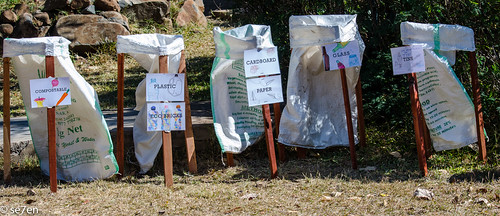
Another challenge that our kitchen took on during the festival was to create a zero waste policy. All our Plastic, Glass, Tin, and paper/ cardboard was stored separately and fully recycled or turned into *Ecobricks. The Zero waste policy also includes our food. We try to upcycle all leftover food into new delicious healthy creative meals for the next day where possible. Extra breakfast oats would be turned into our date balls used as snacks during planting days, as well as deep fried doughnuts for desserts. Left over salads from lunch can be used to fill a soup or add to a stew. This is always my favourite challenge of them all as it really pushes the creative juices. Restaurants around the globe are well known for their careless waste of perfectly good food. Once you have gotten to know the farmers and realise how long it takes them to grow such beautiful eco conscious fruit and veg the last place I would want to see it is in the bin. All our organic waste is also placed into composting holes where many varieties of veggies started to grow after last year’s festival. This can also be used as mulch for planting. Being able to buy our dry pantry products in bulk helped eliminate many of the packaging issues we suffered the year before. For example Instead of each kg of oats coming in its own box we were able to buy large 25kg bags. *I am going to blog about Eco-Bricks, but basically they are plastic bottles filled with non-recyclable waste and then used as bricks.
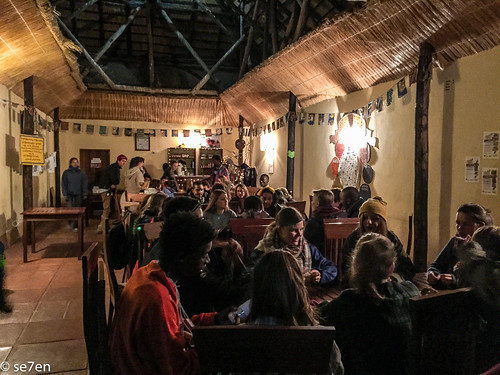
Our menu had to be sustainable, ethical, and not expensive as all monies coming into the festival should be used on the trees and ongoing projects in Livingston. However using our creative minds we were able to achieve this with no problem. We cooked mostly vegan meals with the inclusion of dairy into a few meals, as well as having 2 chicken nights a week and 2 egg mornings a week. Even though charcoal burning is a major cause of deforestation, meat production sits at the top of the list. As we did not want to push people too far out of their comfort zones these extra protein packed meals where included for the Non Vegans. We were able to purchase our chickens and eggs from free range farms in Livingston. Going about it in the most ethical way possible. All meals included very healthy grains and starches as well as the mixture of vegetables available from the surrounding farms. Keeping our planters filled with energy out on the farms. Homemade muesli, oats, porridge and fresh fruit for breakfast, followed by a choice of 3 types of salads for lunch finished with delicious stews, curries and soups with homemade bread for dinners. This year we also included a tradition meal to choose from in the evenings that usually included Nshima (Pap), a vegetable relish with ground nuts or beans. This was prepared b y our local kitchen guys each day. Giving the volunteers a chance to not only eat our western style cuisine.

The next big challenge is keeping our meals exciting. Serving oats and porridge each day calls for some exciting flavours. Rooibos and cinnamon, Raison and toasted coconut, Apricot and rooibos, Chocolate, Strawberry, Banana and cinnamon and our very favourite coffee… where among the many we made.
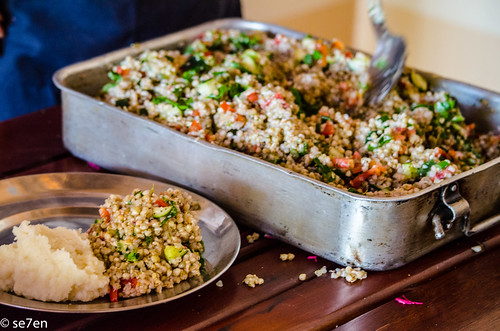
Our pre ordering in Cape Town made our salad selections possible. The use of pearl barley, Buckwheat, rice noodles and seeds helped keep our creativity at a high. Incorporating them with seasonal produce and power packed flavours kept everyone going long into the afternoon. Some favourites where our Asian noodle salads, mushroom risotto style barley with fresh leaves and fresh Moroccan style buckwheat salads.
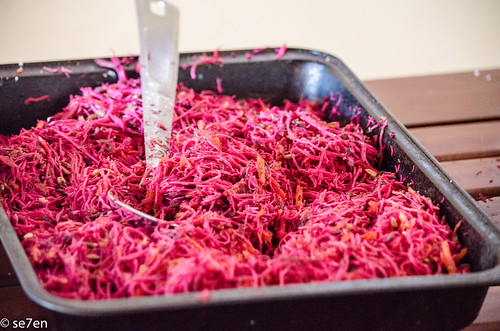
Dinner every night helps if you can make a one pot wonder with yummy sides. Being able to start prep in the morning and allow to keep cooking in the Wonderbags during the day saved time to be able to produce such fresh healthy salads for lunch. The use of chick peas and lentils where very present in many meals as they are a very high source of protein. Being able to upcycle many of the lunch leftovers into dinner also created a unique style of cooking for us. Many of our dinner favourites where All day wonderbaged veggie soup topped with braised cabbage and herbed bread, chicken and carrot stew, Lentil and chick pea sloppy Joes with homemade slaw and spiced green bean and rape dhal served with toasted masala chick peas.
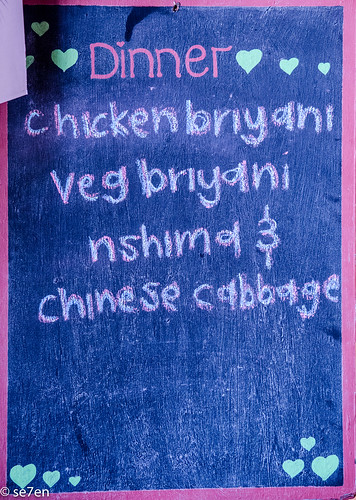
And a Brilliant Bonus Bread Recipe, Thanks to Amanda.
Let’s Meet the Players:
- 1 kg flour
- 10g sugar
- 10g salt
- 10g yeast
- Water
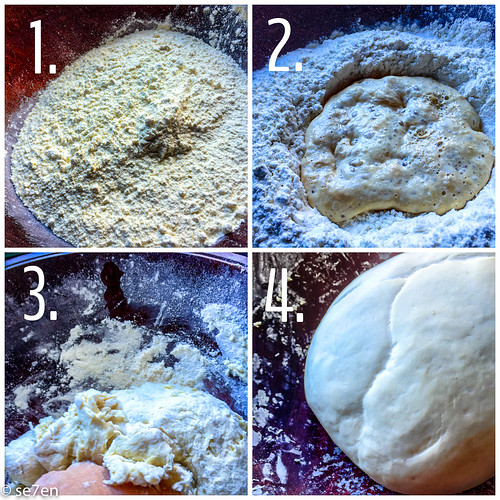
Let’s Play the Game in Se7en Steps:
- Place your flour in a large bowl, make a well in the centre and add your sugar and yeast in the well. Add 100ml warm water into the centre and mix the yeast and the sugar. Leave for 10 min for the yeast to activate.
- Place your salt around the edges of the bowl far from the yeast and sugar as the salt will stop the yeast from activating.
- Once you have activated the yeast you can start incorporating more warm water and mixing the whole time until you form a very soft almost wet dough.
- Leave the dough in the same bowl for an hour or so until it is light and fluffy. Try place it in a warm spot to help with the proving of the dough.
- Once the dough has proved, place into the tray you would like to bake in.
- Allow to proof for a second time till light and fluffy and back in a hot oven 200 Degrees Celsius for 12 to 20 min till golden brown.
- You are able to add any flavours you like to the dough. Add after the yeast has activated.
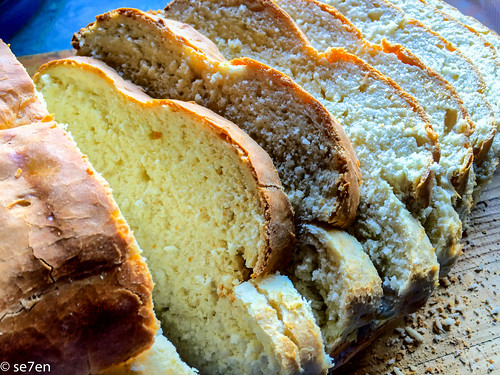
Huge Thank You to Amanda of Saucisse Boutique Deli, for a week of fabulous feasting and for this blog post.


Yay for food.
I’m not surprised, at all that the food was great, we hit up the deli weekly when we still lived in Woodstock.
Makes my batch cooking for my family of 3 sound like child’s play 🙂
Hay Cassey… The food in camp was brilliant… I had no idea that I would literally be feasting, day after day after day. And the deli, well let’s just say worth a drive all the way up the peninsula, that’s for sure!!!
Oh Mrs FF, doesn’t it. When we were three I definitely batch cooked, until we were five. And then we ran out of big enough pots and pans and the thought of batch cooking for ten leaves me reeling. the food was fresh and bright and fun at every meal, totally added to the joy of being there!!!
the dishes sound absolutely amazing!
Hay Irene, I have to say I was a little nervous going into it… a week of vegan and vegetarian, with only two meaty dishes. I never thought I would survive. To be honest the food was just insanely fabulous and I didn’t miss a thing from home!!! thanks for stopping by and hope you have the most fantastic week!!!
This sounds amazing! I am lovely reading all about your trip! (Did you know that Wonderbags are on special at Yuppiechef at the moment??)
Oh Jo… Thank you for the tip and I heard it via the twitter grapevine as well… My order is dashing towards me as we speak!!! Have a great evening!!!
I’d really love to go completely zero-waste – after reading http://www.amazon.co.uk/No-Impact-Man-Saving-planet/dp/0749953209/ref=pd_sim_14_17?ie=UTF8&refRID=0H95VXT092EF97EH4HZP I was really inspired and did a lot to reduce our rubbish output, but I know there is more I could do. Would be great to hear any tips you have in addition to what you mention in this post (eg buying in bulk to reduce packaging)
Hay Zoe… I am going to look that book up… I am so curious now. A while back I heard of a zero-garbage town, and thought it just wasn’t possible… but believe it or not, it is actually totally possible. I think it is all about being really intentional. Wow, there is so much to learn all the time!!!